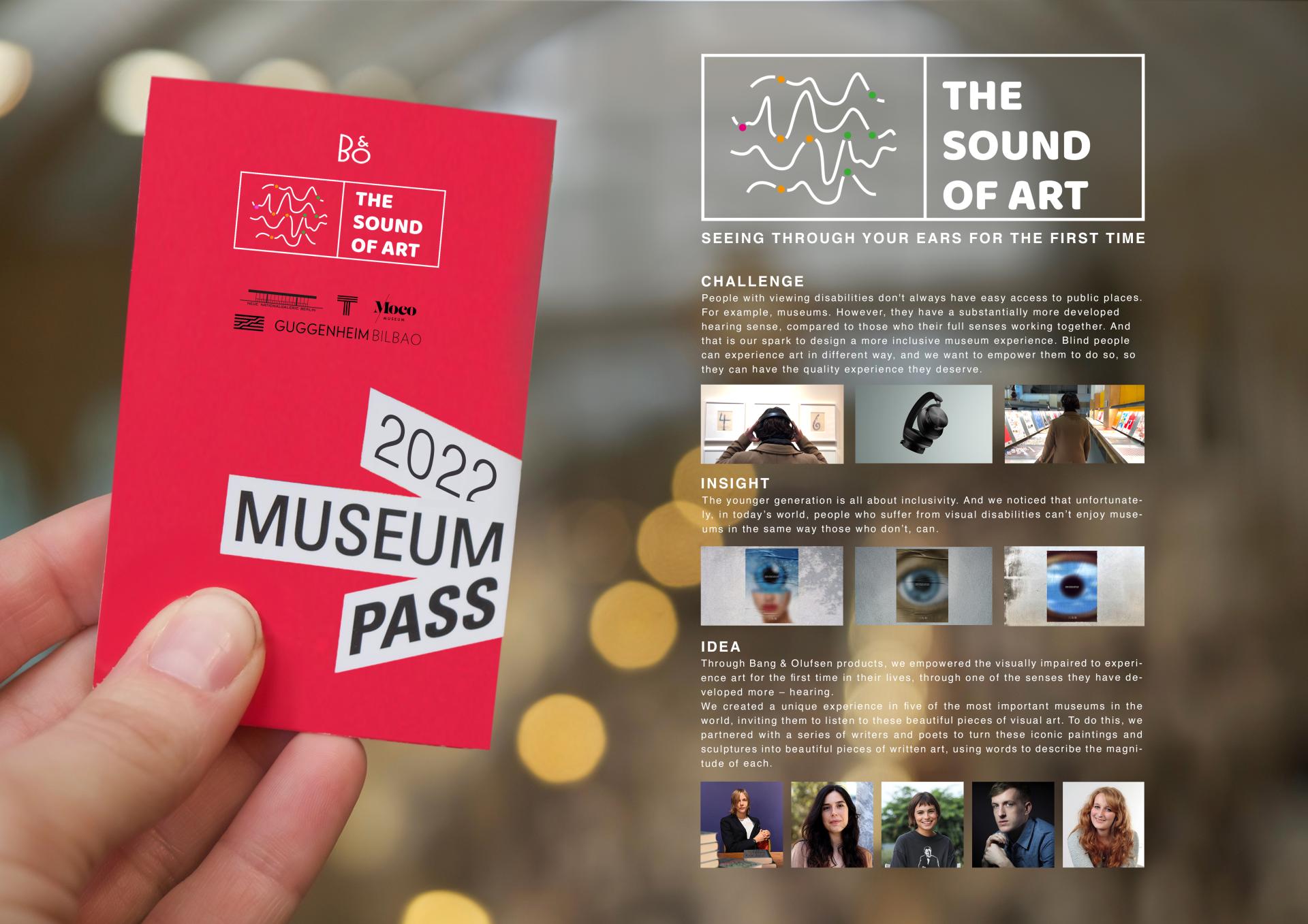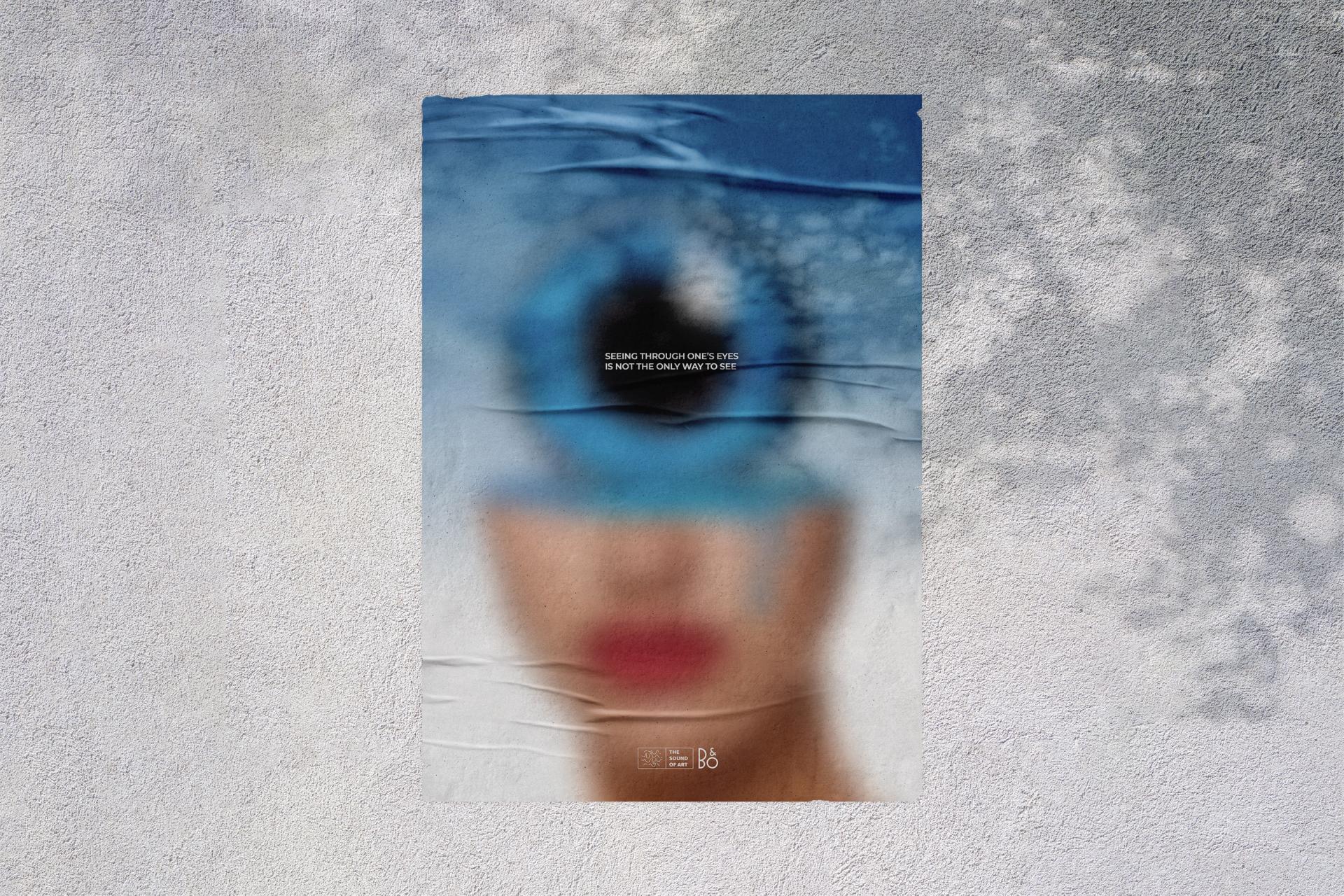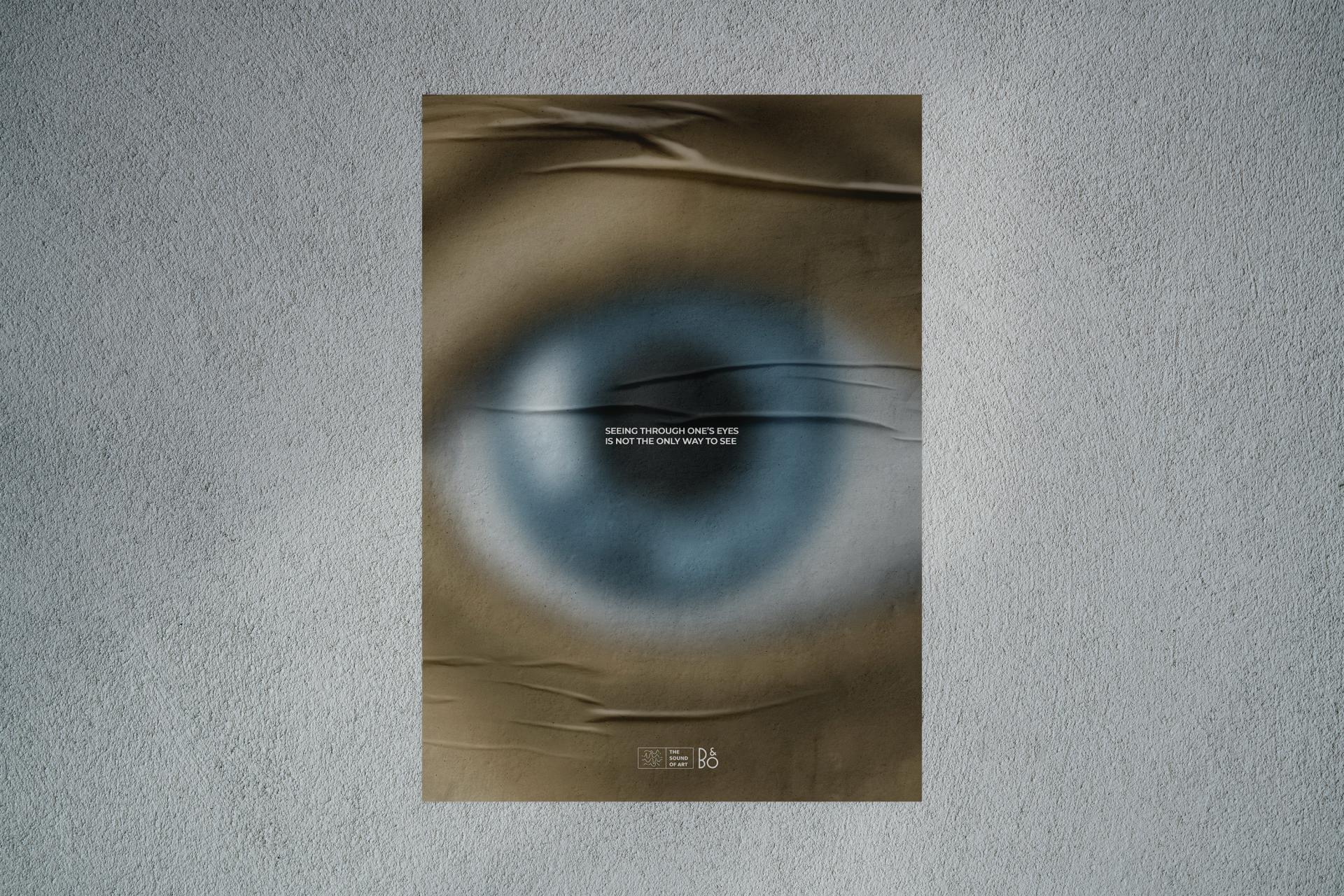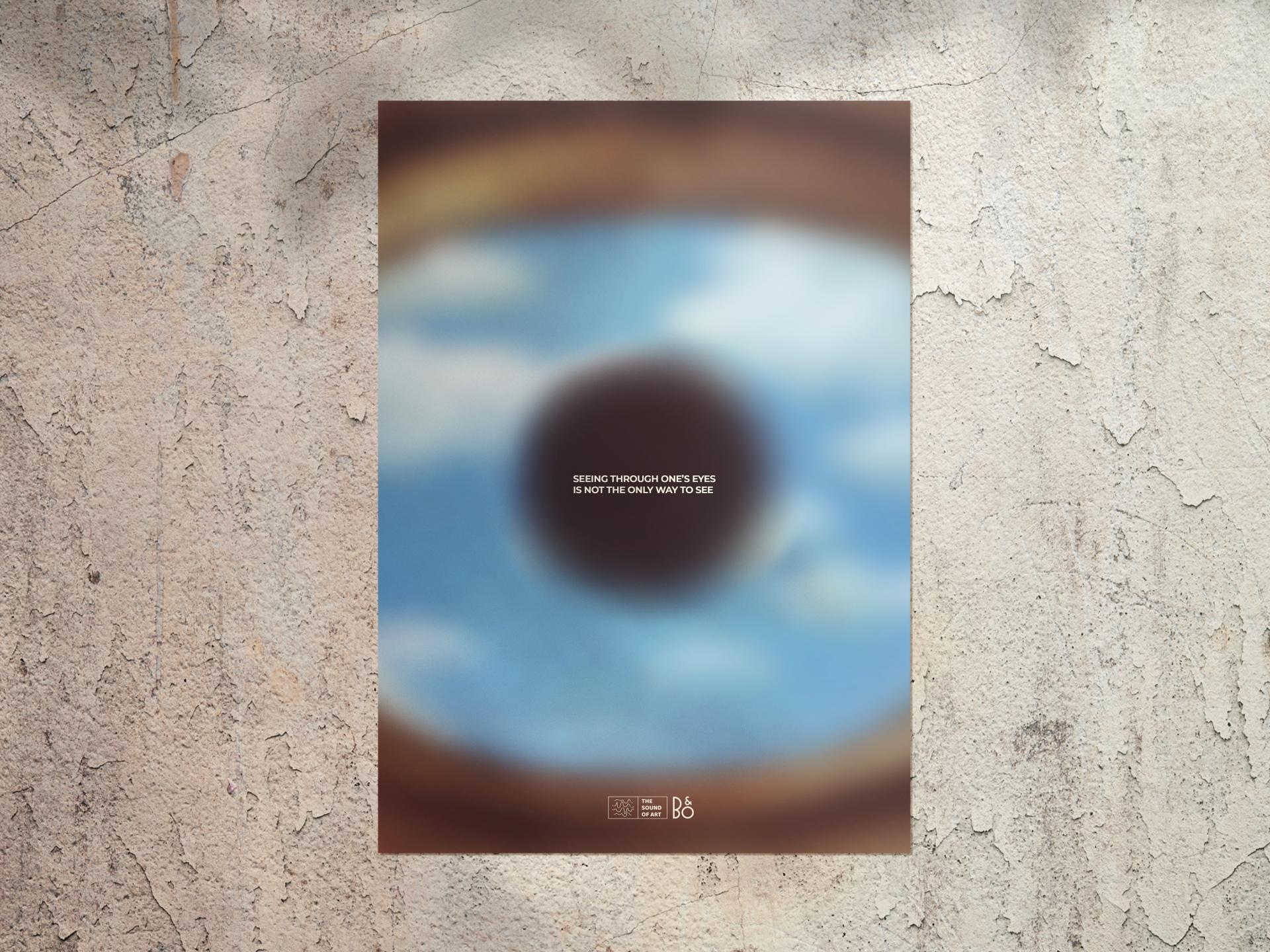The sound of Art
Basic information
Project Title
Full project title
Category
Project Description
Try to cover your eyes. What do you see?
For us it's just nothing, for blind people is everything.
We want to give the opportunity to blind people to feel art through senses they have more developed, in places they do not represent their normality, such as museums. Indeed, we decided to spread the vision of art not just through sight, thanks to five young promising artists' writings from around the world and a collaboration with hi-fi products brand Bang & Olufsen.
Geographical Scope
Project Region
Urban or rural issues
Physical or other transformations
EU Programme or fund
Which funds
Description of the project
Summary
We were challenged to find a solution to the lack of accessibility for blind people in places that are not part of their daily life, such as museums.
The younger generation is all about inclusivity. And we noticed that, unfortunately, in today’s world, people who suffer from visual disabilities can’t enjoy museums in the same way those who don’t, can.
Through Bang & Olufsen products, a worldwide brand in the market of hifi products, we empowered the visually impaired to experience art for the first time in their lives, through one of the senses they have developed more – hearing.
We created a unique experience in five of the most important museums in the world, Triennale in Milan, Tate Modern in London, Guggenheim in Bilbao, Centre Pompidou in Paris, MoCo museum in Amsterdam and Hamburger Bahnhof in Berlin; inviting all kind of people to listen to these beautiful pieces of visual art from another perspective. To do this, and to reach a younger target so that the theme of inclusion could be spread, we partnered with a series of writers and poets, all aged less than 35, from all Europe, to turn these iconic paintings and sculptures into beautiful pieces of written art, using words to describe the magnitude of each.
Key objectives for sustainability
If on one hand we have the aim of a more inclusive world, on the other hand we need people to hear and embrace this message. In order to do that, we created a collaboration with hi-fi items of the brand Bang & Olufsen, the creator of the "Cradle to Cradle" initiative, a very efficient way to look at products. The framework, standard and certification have been created by the commission, which aims to support sustainable development and circular change, by introducing a replaceable, customizable and upgradable approach to products. The certification validates the circular design and sustainable production achievements for the speaker and paves the way for further circular technology developments.
One of the greatest causes of pollution of our days are changes in devices due to technological progress, that leads to tons of items thrown away because they are outdated. With the Cradle to Cradle initiative, everything is replaceable and updates can be downloaded thanks to items' softwares. This way of acting is nothing new to human history, but are we sure that it has always been our first choice?
Key objectives for aesthetics and quality
For the realization of our project, we wanted, in terms of aesthetic, not to push to the edges the visual part because the message we want to communicate is completely different to the visive nature. Nevertheless we created OOHs that are very connected to the theme of art since they all portray painting of different artist, such as Magritte, Escher and Morski.
A focus point of our project, the main one, is the experience in museums we have designed. This is a journey through senses that do not take in consideration the sense we associate the most with our daily life, sight. The result is an immersive path in what is life without one of our senses, stressing not that we underestimate, but actually what we cannot feel.
Hearing is one of the most powerful senses because is directly connected to our memory and is one of the main elements of recognition in external stimuli. The result of this experience is seeing through ears for the first time ever.
Key objectives for inclusion
As we said before, this project is all about inclusion for people with disabilities and the places they can get in, so this is our main aim and what understanding everybody's needs really means. Like how it should be in everyday life, empathy is one of the main feelings this project marches on, basically starting with another one feeling very common in people: curiosity.
This is just the starting point for other inclusivity issues we face nowadays, because the only way to truly be part of changes is embracing the change itself. We often say "if I were you" when we are giving advices, but we are not them and will never be.
For the first time ever we could embody someone else's perspective but not to give them advices, but to help them, because people do not only need advices, sometimes they just want to be heard.
Just when they have been heard, we took part in the change.
Physical or other transformations
Innovative character
If in schools we learn how to survive in the world by ourself, when we go out we still have much to learn, and this does not happens in places, but with people. "The sound of Art" is something not only made up by people - actually is their exact perspective we are looking from - but is the real place where we can still take a seat and learn from something we have never experienced in our life before: nothing. We are used to think that everything we see is what really happens around us, but there is still a lot more that we can understand, not just through sight.
Oscar Wilde said "Experience is simply the name we give our mistakes" but in this case "experience" is simply what we have seen before we actually learned how to do it. This process will be started only when we leave our old perspective at the hall of the museum but will not know an end, because what we learn is a teaching we must not forget but instead spread through people.




